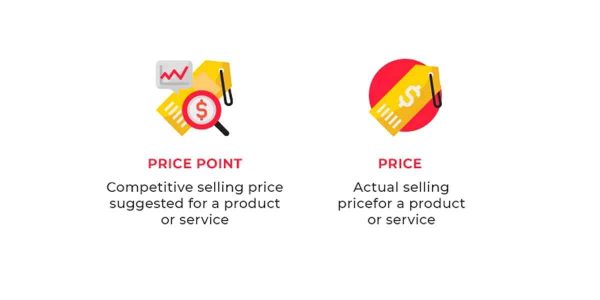- 28/03/2024
- Rohit Mishra
Are you stepping into the world of online selling? If yes then the Amazon Private label business is the safest bet for you. It ensures smooth business, good growth, and remarkable returns. In this article learn about the basic Amazon private label requirements and how it equips you to a safe business ahead.

Table of Contents
- Unique Bar Codes or UPCs
- High-Quality Product Images
- Accurate Product Descriptions
- Competitive Pricing Strategy
- Prime Worthy Shipping
- Inventory Management
- Customer Reviews and Ratings
- Compliance with Amazon’s Policies
- Brand Registry Enrolment
- Customer Service Excellence
- A Professional Seller Account
- Continuous Market Research
1. Unique Barcodes or UPCs
UPC is the Universal Product Code that identifies a retail product on Amazon. Before listing products on Amazon you need to purchase a UPC. UPC is a scannable bar code with a 12-digit number underneath.

On scanning the barcode, the software on Amazon can identify the product. Amazon needs UPC to create a product listing. UPC should always be purchased from GS1- a non-profit international organization that deals with the product barcodes of millions of companies.
2. High-Quality Product Images
Customers want to view products before they buy. High-quality, clear, and bright images help consumers get a glimpse of the product that they may expect when purchasing.

Therefore, one of the basic Amazon private label requirements is to upload high-quality images that reflect actual product qualities. These images should also meet the Amazon Product image requirements. Images for Amazon listing should either be JPEG, TIFF, PNG, or GIF formats only.
3. Accurate Product Descriptions
Good and detailed product descriptions can speak volumes about your product quality and benefits. It highlights the specifications of the products, their utility, and USP.

Portray the features of your products by turning them into benefits and how they can be advantageous for your buyers. Give quick-read descriptions because no one wants to read lengthy paragraphs. Use keywords in headlines and the body of the description to attract more traffic.
4. Competitive Pricing Strategy
A competitive pricing strategy is a key Amazon private label requirement. It means analyzing the prices of products of your competitors and deciding the prices of your products accordingly.

Some products are subject to seasonal trends and their prices fluctuate accordingly depending upon demand. Keep track of how frequently your competitors change prices and follow a similar pattern to stay afloat in the market.
5. Prime-Worthy Shipping
When it comes to order fulfilment, you need to decide whether you will ship orders by yourself or use the Amazon FBA module.

The Amazon FBA module of business gives you the ease of doing business. It manages the warehouse, inventory stocking, and shipping on your behalf. It also takes care of customer care support, refunds, and returns.
6. Inventory Management
Inventory management means controlling your stock. It aims at maintaining optimum stock in the warehouse in tune with the projected demand. Often sellers use inventory management software to avoid the situation of overstocking or stock-out.

Packaging and correct labelling of products also play a crucial role in maintaining inventory and stocking products correctly. Using market indicators to calculate optimum inventory helps control wastage.
7. Customer Reviews & Ratings
Getting reviews and ratings from your customers for your private label products on Amazon helps to gather feedback. Both positive and negative feedback and reviews can help to better your business.

Negative feedback can serve as suggestions helping you incorporate changes and innovate your products to meet changing demands. Positive responses and reviews build brand reputation and attract more customers.
8. Compliance With Amazon’s Policies
One of Amazon’s private labelling requirements is to create a seller account that allows you to sell products online. However, it also means adhering to certain terms, conditions, and policies as defined by Amazon.

These compliances include submitting documents that prove that the products sold by the seller are safe for public use. These compliance documents may be quality certificates, safety manuals, test reports, registration cards, images of packaging labels, and compliance markings.
9. Brand Registry Enrollment
Brand Registry is a unique program by Amazon that gives the seller greater control over their brands. Sellers can monitor their brands, and get help on Amazon A+ content, product listings, and advertising strategies.

However, sellers with a registered trademark are only allowed to enrol in the Brand Registry program and avail of its benefits. It protects your brand and prevents fake or counterfeit products from selling in your name.
10. Customer Service Excellence
Customer experiences from your product decide the fate of your online sales. Therefore, it is important to give them excellent customer service. Customer service includes service at the time of selling products as well as after-sale service.

Good and hassle-free purchasing experience along with easy returns and quick refunds accounts for great customer service. All queries and doubts of customers should also be addressed through a transparent communication policy.
11. A Professional Seller Account
Selling private label products on Amazon requires sellers to open a professional seller account with Amazon. It helps sellers to study the product listing of other competing businesses or products that they are interested in selling.

The seller account, also allows the sellers to get in touch with authentic and reputed manufacturers and suppliers. Availing of allied services from the Amazon FBA program becomes easier by opening a seller account.
12. Continuous Market Research
Understanding the volatile online market is the key to a good business. It means evaluating the changing market trends, customer expectations, and demands.

It also involves a deep study of the trending innovations and technologies ruling the market and how they influence consumers. Analyzing the market based on competitive pricing policies of competitors and their marketing strategies helps sellers to compete well in the market.
Conclusion
Selling private label products on Amazon may appear to be complicated, but in reality, it is simple only if you know the basic requirements for the same. A little documentation, some compliances, and a lot of determination can help you sell private label products on Amazon like a pro and establish a brand with its own identity.
So, what are you waiting for? Get going…. put your idea into work mode and start selling your favourite private label products on Amazon.




